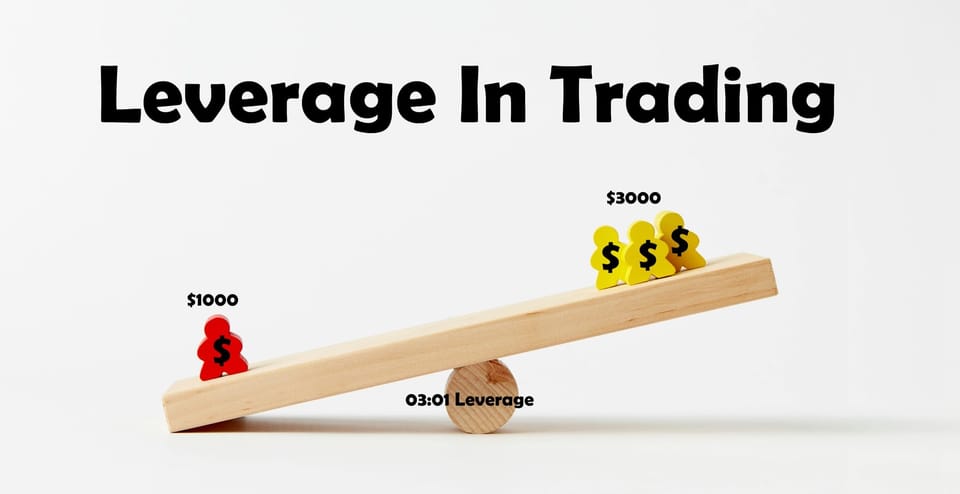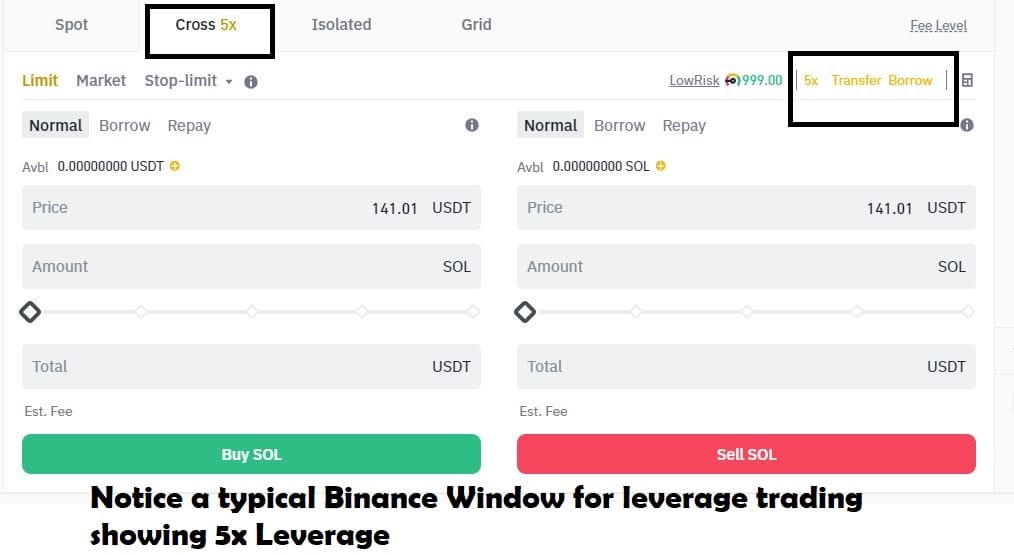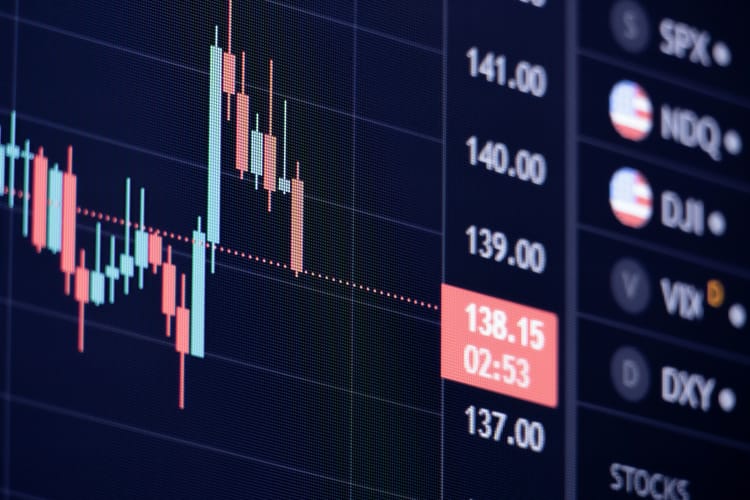What is Leverage in Trading & How to Use It Responsibly

Imagine a situation where you've spotted the perfect trade setup. The charts are aligned and the indicators are screaming "buy,"
But,
there is a small problem – your account balance falls short of the capital needed to seize this opportunity.
What to do in such a situation?
Leverage, often used by experienced traders, can help bridge this gap between your current capital and your desired position size.
However,
Although Leverage can magnify potential gains, it can also amplify losses.
So,
Before you jump in, it's crucial to understand the intricacies of Leverage and how to use it responsibly.
In the blog below, we will discuss the use of Leverage in trading, explore its advantages and disadvantages, and equip you with the knowledge to leverage this tool effectively while managing risk.
Let's Start!
What is Leverage in Trading?
In the context of trading, Leverage refers to using borrowed funds from a broker to control a financial position larger than your initial capital investment. In trading, Leverage allows you to amplify your returns, but it also amplifies your potential losses.
Using Leverage in your Trading Strategy is like using a fulcrum to move a heavier object – a small initial investment can control a much bigger asset.
But there is a flip side as well,
You are leveraging risk as well!
This means you are carrying a higher risk!
Let us explain how
Because you're using borrowed money, even small market movements can have a magnified impact on your investment. If the stock price goes up, you magnify your gains. However, if the price decreases, your losses are magnified, potentially exceeding your initial investment. This can lead to margin calls, where the broker forces you to sell assets to meet your margin requirement (the minimum amount of equity you need to maintain in your account).
How Leverage Works?
Online brokers typically offer various leverage ratios for different asset classes (stocks, forex, etc.). These ratios indicate how much capital you can borrow compared to your initial investment.

For example, a 5:1 leverage ratio means you can control a position worth ten times your initial investment.
You deposit your capital into your online trading account. This initial capital serves as a margin, a security deposit for the broker.
When you identify a trading opportunity, you can choose to leverage your position.
The online platform will typically display the margin requirement based on your chosen leverage ratio and desired position size.
But wait,
You also have to take care of the Margin Calls and Potential Liquidation:
You see, Brokers have minimum maintenance margins, which is a percentage of the initial margin requirement that you need to maintain in your account.
If the value of your leveraged position falls below this threshold, you will receive a margin call. You must deposit additional funds or sell some assets to meet the minimum margin requirement.
If you fail to meet the margin call, the broker may force the liquidation of your position to recover their loaned funds. This can lead to significant losses, significantly if the market price has dropped considerably.
And how does all of this work in the real world?
Let's take an example.
Let's say you want to buy 100 shares of a stock priced at $100 per share with 5:1 Leverage. So, You will calculate as below;
Total Position Value = 100 shares * $100/share = $10,000
Margin Requirement (5:1 leverage) = $10,000 / 5 = $2,000
In this example, you would need to deposit $2,000 (margin requirement) into your account, and the broker would lend you the remaining $8,000 to control the $10,000 position.
The online platform will continuously track the value of your leveraged position.
Now, two things can happen for you here;
If the Trade Goes In Your Favor (Profit)
Let's say the stock price increases by 20% to $120 per share.
So your New Position Value will be = 100 shares * $120/share = $12,000
And Your Profit will be = New Position Value - Initial Investment = $12,000 - $2,000 (your margin requirement) = $10,000
Here's the key point. Notice how your profit of $10,000 is significantly higher than the initial investment of $2,000. This is because Leverage magnifies your gains. Even though the stock price only increased by 20%, your profit is five times larger (due to the 5:1 Leverage) compared to a scenario where you bought the shares without Leverage.
But,
If the Trade Goes Against You (Loss)
Then there is a problem,
Let's say the stock price drops by 10% to $90 per share.
Now your New Position Value will be = 100 shares * $90/share = $9,000
This creates a negative situation:
Here your Margin Requirement will be = $2,000 (unchanged)
But your Account Equity (Your Capital) will become = $9,000 (new position value) - $2,000 (margin requirement) = $7,000
Here's the crucial part.
Even though the stock price only decreased by 10%, your account equity has fallen to $7,000. This is because Leverage magnified your losses. In this scenario, you've lost $3,000 ($2,000 initial investment + $1,000 additional loss from the price drop).
Summing it all up in the table below;
If the Trade Results in Profit
Notice how the 450% Profit is way higher than the 10% profit without Leverage.
If the Trade results in a Loss
Notice how the 350% Loss is way higher than the 10% Loss without Leverage.
What are the Advantages of Using Leverage?
Leverage can be a tempting tool for traders, offering several potential advantages:
One of the most apparent ones is the Magnified Profits. The primary appeal of Leverage is its ability to amplify your gains significantly. If a stock you buy on margin increases by 10%, your return is also 10%. However, if you used Leverage to control a larger position, your return could be much higher.
Similarly, Using Leverage gives you Increased Buying Power. Leverage allows you to control a larger position in an asset with a smaller initial investment. This mainly benefits traders with limited capital who want to participate in high-growth opportunities.
Also, Leveraging Assets can give you Portfolio Diversification (with Caution). Margin accounts, which allow Leverage, can be used for a more diversified portfolio strategy . By leveraging a portion of your capital, you can invest in a wider range of assets without needing a large upfront investment. However, it's crucial to remember that Leverage increases risk across your entire portfolio, not just individual holdings.
But,
While Leverage offers these potential benefits, it's essential to understand that they come with significant risks. We'll explore these risks in detail in the next section.
What are the Disadvantages of Using Leverage?
You might have noticed by now that the potential for amplified gains with Leverage comes with a hefty price tag: magnified losses.
This is precisely where Leverage can be a risky proposition:
The biggest drawback of Leverage is the potential for significantly larger losses than your initial investment. Even a small decline in the price of a leveraged position can wipe out your entire investment and potentially lead to further losses.
When you use Leverage, your broker requires you to maintain a minimum equity balance in your account, known as the margin requirement. If the value of your leveraged position falls below this threshold, you receive a margin call. This forces you to deposit additional funds or sell assets to meet the requirement. In volatile markets, this can lead to forced selling of assets at potentially unfavorable times, further amplifying your losses.
Leverage can be emotionally draining as well, not only financially. The potential for significant losses or even Profits can lead to Greed and fear, clouding your judgment and potentially leading to rash decisions. This can be particularly detrimental during volatile market conditions.
Did you know?
The concept of Leverage played a significant role in the Global Financial Crisis 2008. Increased Leverage used by banks and investors in the housing market ultimately led to a domino effect of defaults and losses across the financial system.
Alright,
So, if there are potential advantages to Leverage, then
How can we use Leverage responsibly?
You see,
Leverage can be a powerful tool,
but like any powerful tool, it requires careful handling.
Here are some key strategies to use Leverage responsibly and mitigate risk:
Have a Solid Trading Setup.
The foundation of responsible leverage use is a well-defined trading setup. You may be making a trading setup for a range-bound market or a volatile one. This plan should outline your entry and exit points, risk tolerance, and position sizing strategy (discussed below). Your Broker firm's Price Action Scanners Can help you make some high-impact trading setups.
Next up is Position Sizing.
This refers to determining how much capital you allocate to each trade. A core principle of responsible Leverage is using a small percentage of your capital per trade, typically 1-2%. This helps limit potential losses and ensures you don't overexpose yourself to risk.
And yes, never forget to place Stop-Loss Orders. These are essential tools for managing leverage risk. A stop-loss order automatically sells your position if the price falls below a predetermined level, helping to limit your losses if the market moves against you.
And Last,
Use Backtesting Strategies: Before deploying Leverage with natural capital, consider backtesting your trading strategy using historical data. This can help you understand how your strategy might have performed in different market conditions, including volatile periods. By identifying potential risks through backtesting, you can refine your approach and make informed decisions about leverage use.
By implementing these risk management strategies, you can harness the potential benefits of Leverage while mitigating the associated risks. Responsible Leverage is about calculated risk-taking, not gambling with your capital.
Conclusion
In conclusion, Leverage offers the potential for magnified gains but also carries the significant risk of amplified losses.
Here are some key takeaways to remember:
Understand the Risks: Before using Leverage, thoroughly understand the potential downsides and how they can impact your financial well-being.
Develop a Risk Management Plan: Create a trading plan incorporating risk management strategies like position sizing and stop-loss orders.
Start Small: If you're new to leverage, begin with a small portion of your capital and gradually increase your leverage use as you gain experience and confidence in your risk management practices.
Discipline is Key: Maintain discipline and stick to your trading plan, especially during volatile market conditions when emotions can run high.
Trade Smarter!





